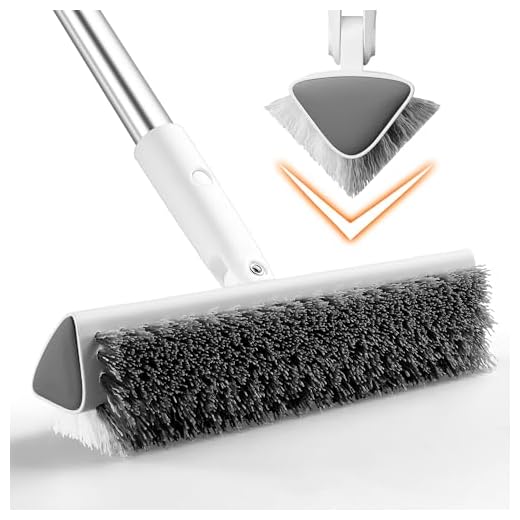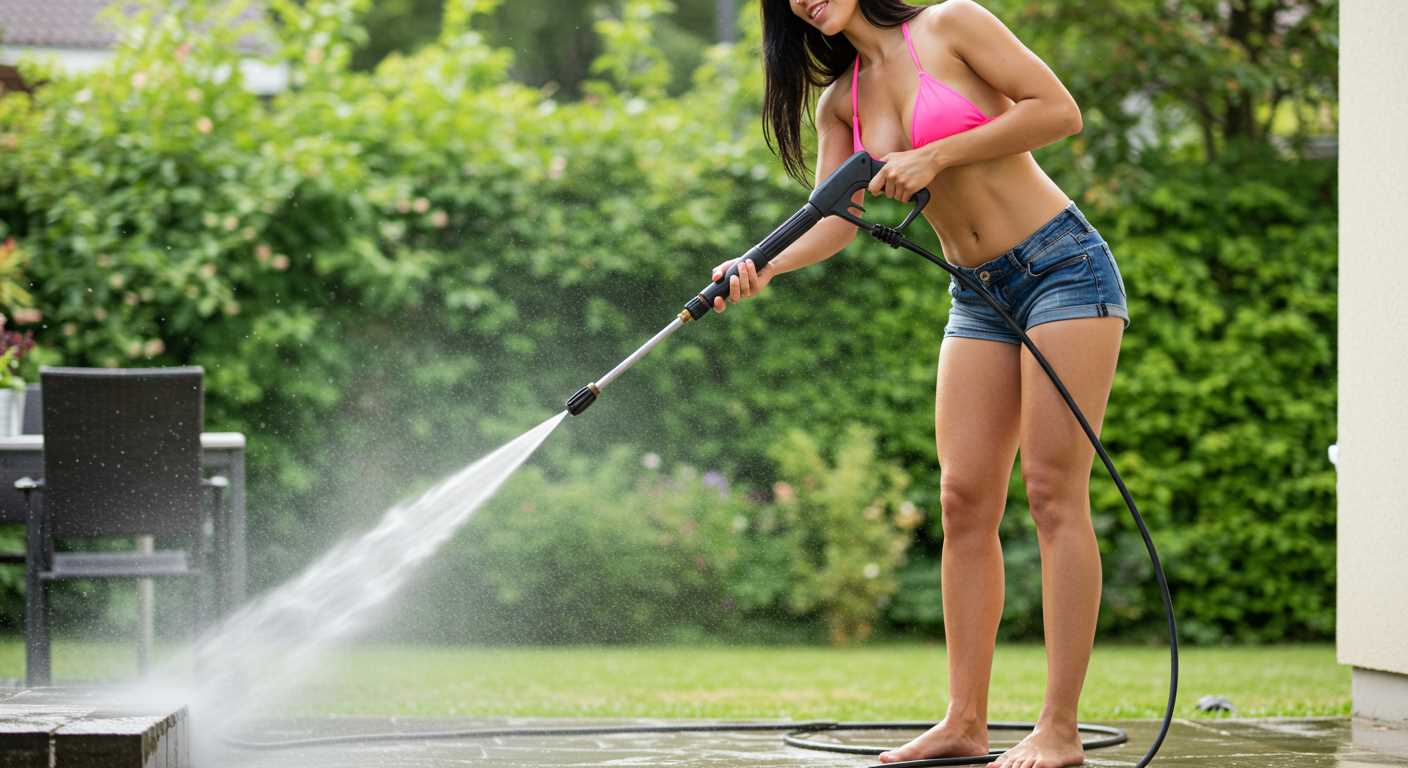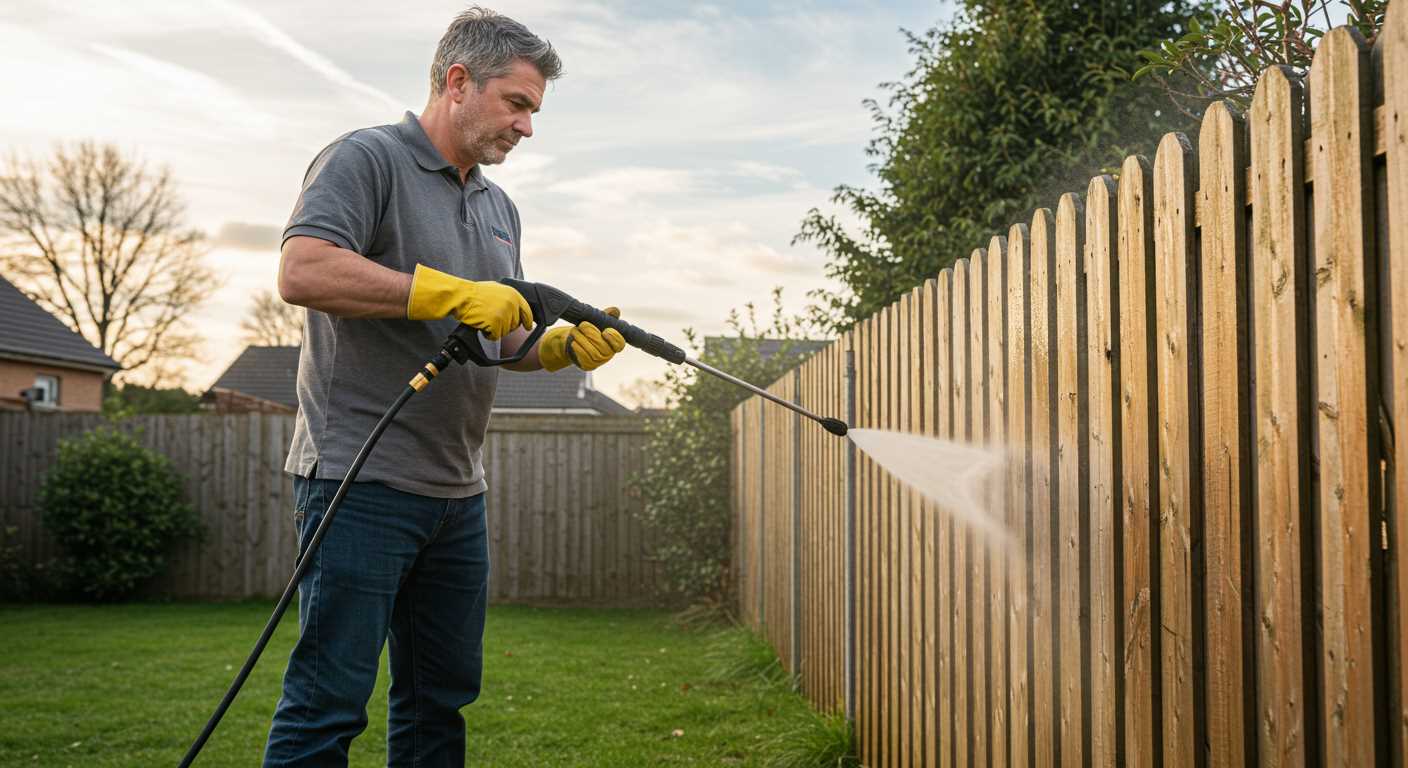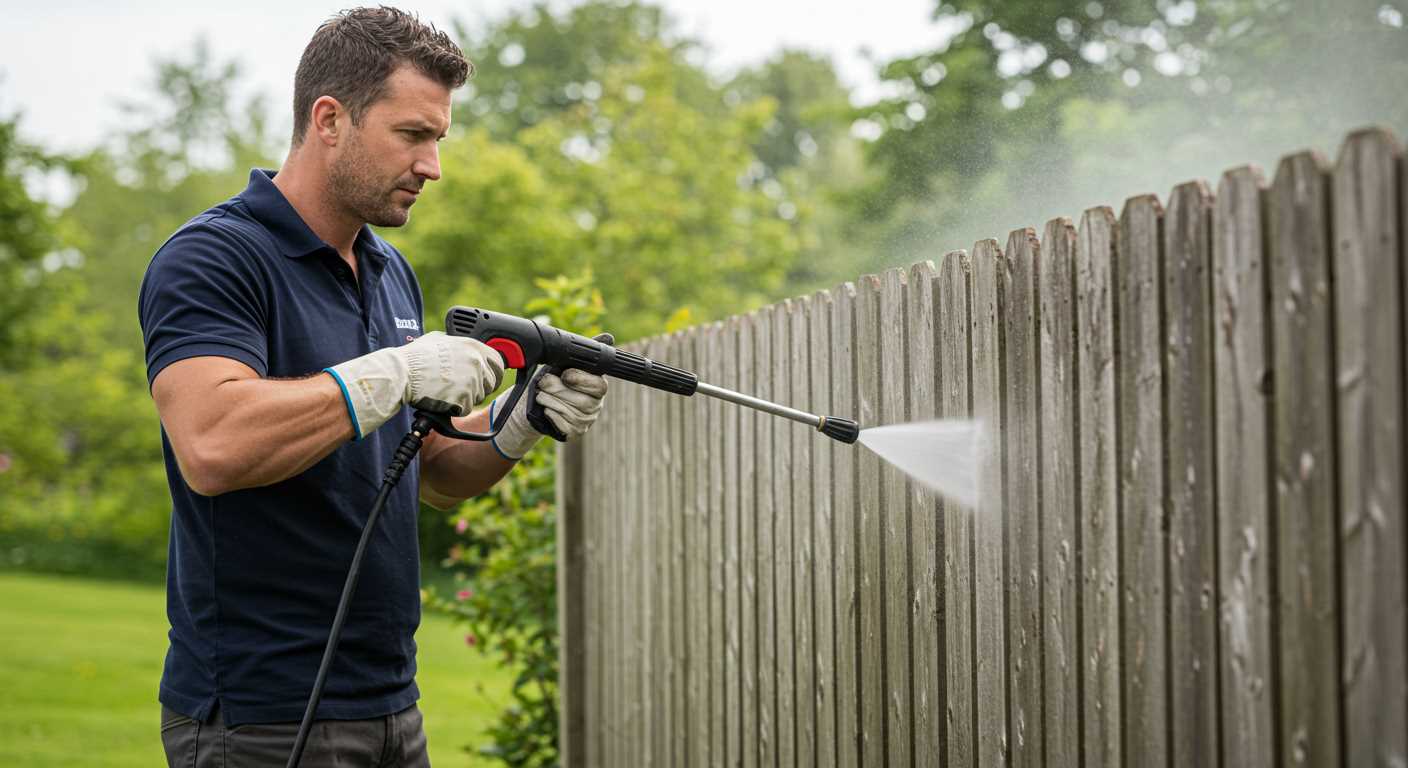



For those looking to refresh the look of outdoor stone surfaces, I recommend using a combination of baking soda and water for a gentle approach. Mix a solution of one cup of baking soda to a gallon of warm water. This mixture not only acts as a mild abrasive but also neutralises acidic residues that can accumulate over time.
Once you’ve prepared your cleaning solution, apply it generously to the surface with a stiff-bristled brush. Allow it to sit for 15-20 minutes to penetrate stains and grime. This method effectively lifts dirt and organic matter without risking damage to the stone.
After scrubbing, rinse the area thoroughly with clean water to eliminate any residue. If stubborn stains remain, you can create a paste using baking soda and a small amount of water and apply it directly to the affected areas, letting it sit for several hours before scrubbing again.
Regular maintenance through this technique can significantly extend the lifespan of your exterior stone surfaces, keeping them looking pristine with minimal effort. Consider repeating this process every few months to maintain their appearance and prevent the build-up of tough stains.
Effective Methods for Restoring Outdoor Tiles
The combination of vinegar and baking soda is a powerful duo for tackling stubborn grime. Mix equal parts of each to form a paste and apply this to the dirty areas. Allow it to sit for approximately 30 minutes, then scrub with a stiff brush for excellent results.
Consider also using a mixture of warm water and dish soap. This method is gentle yet effective. Use a bucket to combine around 5 litres of water with a few drops of dish soap. Apply the solution with a mop or cloth, ensuring to reach into the crevices where dirt often accumulates.
For natural solutions, a high concentration of saltwater can provide benefits. Mix salt in warm water at a ratio of 1:4 and use it to scrub surfaces. This method is eco-friendly and can help remove light moss and algae growth.
In cases of stubborn stains, try using a diluted bleach solution. Combine one part bleach with ten parts water. Apply this to the affected areas, ensuring proper ventilation, and allow it to sit for about 10 minutes before scrubbing. Rinse thoroughly afterwards.
Utilising a broom with stiff bristles can help remove loose debris and dirt efficiently. Regular sweeping paired with one of the above methods can maintain the appearance of your external surfaces.
Finally, if you have access to a garden sprayer, use it to distribute your cleaning solutions evenly without needing a pressure mechanism.
Removing Surface Dirt and Debris
Begin by gathering the right tools: a stiff broom, a dustpan, and a garden hose. Use the broom to sweep away loose dirt, leaves, and debris thoroughly. This initial step helps prevent any scratching on the surface when you move on to deeper cleaning methods.
After sweeping, closely inspect the surface for any stubborn patches. If necessary, prepare a mixture of warm water and a small amount of mild detergent. Apply this solution to blemished areas using a soft-bristle brush or cloth, scrubbing gently to avoid damage.
For stubborn stains, consider using white vinegar or baking soda. Sprinkle baking soda on the affected area, followed by a spray of vinegar. Allow the mixture to fizz and sit for 10-15 minutes. This not only helps to lift grime but also deodorises the area.
Rinse thoroughly with the garden hose to remove any cleaning residues, ensuring no soap is left behind, which could lead to slip hazards. For best results, follow up with another sweeping session to clear away any debris that may have been dislodged during the cleaning process.
Regular maintenance is key; sweep and rinse periodically to prevent build-up. A proactive approach will keep the surface looking its finest with minimal effort.
Choosing the Right Cleaning Solution for Stains
Selecting an appropriate cleaning solution is critical for tackling various blemishes on surfaces. For organic matter like moss or algae, a mixture of vinegar and water is surprisingly effective. Aim for a solution that consists of one part vinegar to three parts water. Apply this directly to the affected area and let it sit for 30 minutes before scrubbing.
For oil or grease stains, dish soap offers a practical approach. Combine a few drops of a degreasing dish detergent with hot water and scrub the area using a stiff-bristled brush. Rinse thoroughly afterwards to ensure that no residue remains.
When dealing with rust marks, consider using a paste made from baking soda and water. Apply the paste to the stain, allowing it to sit for several hours. The baking soda acts as a mild abrasive, making it easier to scrub away the discolouration.
If you are facing stubborn stains from paint or other difficult substances, a solution that contains isopropyl alcohol can work wonders. Dab the alcohol onto the stain, and after a few minutes, use a cloth to gently lift the residue off.
Always conduct a patch test with any cleaning agent on a small, inconspicuous area first. This will help to avoid any adverse reactions that might damage the surface. Consider your specific stains and choose your cleaning solution accordingly; it’s often a balance between efficacy and surface safety.
Using a Broom and Scrubbing Technique
I highly recommend using a sturdy broom paired with scrubbing for effective surface treatment. Begin by sweeping away loose dirt and debris, ensuring the area is free from large particles. This initial step makes a considerable difference in the scrubbing phase.
Select a broom with stiff bristles. Its firm construction can handle grime but won’t damage the surface. Once the area is swept, prepare a suitable cleaning solution. A mixture of warm water and mild detergent or vinegar can remove stains effectively. Apply the solution generously onto the surface, allowing it a few minutes to penetrate tough spots.
After soaking, grab a stiff-bristled brush or a scrubbing pad. Start scrubbing in circular motions, focusing on stained areas. Consistent pressure helps lift muck. For stubborn spots, consider repeating this process, reapplying the solution as needed.
Once satisfied with the results, rinse the area thoroughly with clean water. A bucket can suffice if a hose isn’t available. Ensure no residue remains, as it might attract dirt later. This technique not only restores the look of the surfaces but also extends their longevity, keeping them appealing for longer periods.
How to Use Vinegar for Algae and Moss Removal

Combine equal parts of white vinegar and water in a spray bottle. Apply the solution directly onto the affected areas, saturating the algae and moss thoroughly.
Application Tips
For stubborn growth, allow the vinegar mixture to sit for at least 30 minutes before scrubbing. This helps break down the organic matter effectively. Use a stiff-bristled brush for vigorous scrubbing to remove the loosened debris.
Post-Cleaning Care
After scrubbing, rinse the surface with plain water to wash away any residue. Repeat the process if necessary for areas with heavy growth. Regular treatments can prevent the return of unwanted greenery.
Utilising Baking Soda for Tough Stains

For stubborn marks, baking soda proves effective. This natural abrasive lifts grime without scratching surfaces. Create a paste by mixing baking soda with water until it reaches a thick consistency.
Application Process

- Sprinkle the paste generously onto the stained area.
- Let it sit for 15-30 minutes, allowing it to penetrate the stain.
- Use a stiff brush or scrubber to work the paste into the surface. Focus on tougher spots with additional pressure.
- Rinse with clean water, ensuring all residue is removed.
This method not only targets stains but also neutralises odours, making it beneficial for areas exposed to organic materials. For persistent issues, repeating the treatment may be necessary.
Mixing Other Ingredients
Combine baking soda with vinegar for deeper cleaning power. The fizzing action created when they are mixed aids in breaking down tough stains further.
- Pour vinegar over the baking soda paste once applied.
- Wait for the bubbling to stop before scrubbing the area again.
Following this procedure ensures that even the toughest blemishes are addressed efficiently, promoting a more appealing outdoor space.
Applying a Sealant After Cleaning
Once you have effectively prepared your outdoor flooring, applying a sealant is the final touch that will enhance its longevity and appearance. A quality sealant acts as a barrier against moisture, stains, and dirt buildup.
Selecting the Right Sealant
Choose a sealant suited for your material type. For natural stone, a penetrating sealant is recommended, as it offers deep protection. For concrete, you might opt for an acrylic or solvent-based sealant that provides a glossy finish and is easier to apply.
Application Process
Before application, ensure the surface is completely dry. A damp surface can impede the adhesion of the sealant. Use a paint roller or sprayer for even coverage; avoid puddles as they may create uneven surfaces. Always follow manufacturer instructions regarding drying times and the number of coats needed.
| Sealant Type | Best Material Match | Application Method |
|---|---|---|
| Pening Sealant | Natural Stone | Brush/Roller |
| Acrylic Sealant | Concrete | Sprayer/Roller |
| Solvent-Based Sealant | Mixed Surfaces | Brush/Sprayer |
After the application, allow ample time for the sealant to cure. This step is critical as it will ensure maximum durability and effectiveness in protecting the surface over time.
Maintaining Cleanliness Post-Cleaning
Regular sweeping is essential to prevent the build-up of dirt and debris after your initial efforts. A simple broom can efficiently clear away loose particles, keeping surfaces looking tidy between deeper sessions. Aim for a quick sweep at least once a week.
Incorporate a mild detergent solution in your routine, applying it occasionally with a soft brush to refresh the appearance. This not only enhances shine but also prevents long-term staining from organic matter.
After cleaning, consider using a damp cloth or sponge to remove any remaining residues from your cleaning agents. This step eliminates the risk of leftover chemicals causing discolouration or attracting dirt.
A sealant application can protect surfaces and facilitate easier maintenance. Following the cleaning process, applying a suitable sealant creates a barrier that makes future stain removal quick and efficient.
Regular inspections for signs of mould or growth are good practice. Early identification allows for swift action with appropriate treatments, keeping surfaces pristine.
Lastly, adjusting any surrounding vegetation to reduce leaf litter accumulation can significantly enhance cleanliness. Trimming overhanging branches helps limit the debris falling onto surfaces, preserving their integrity for longer periods.







